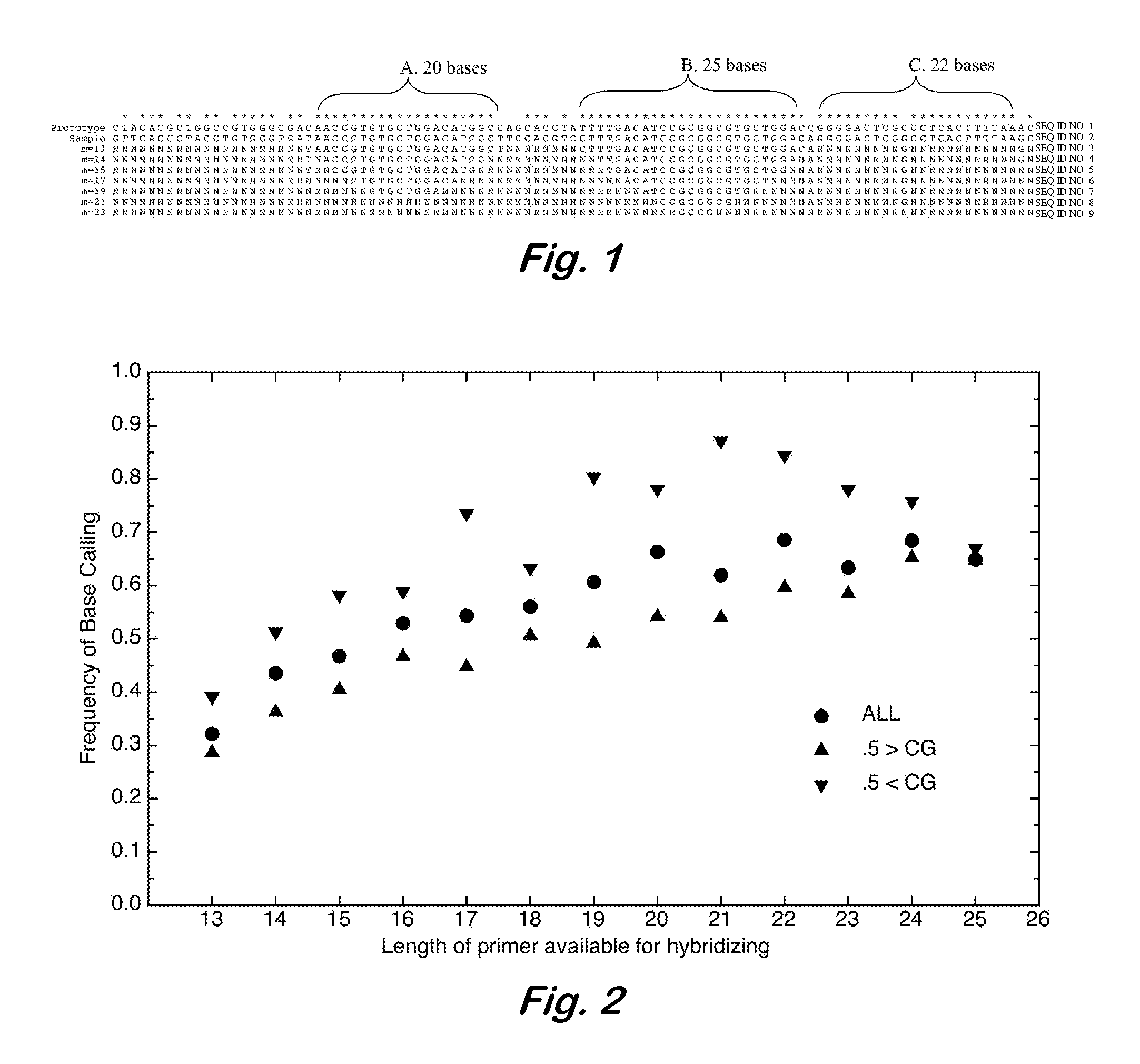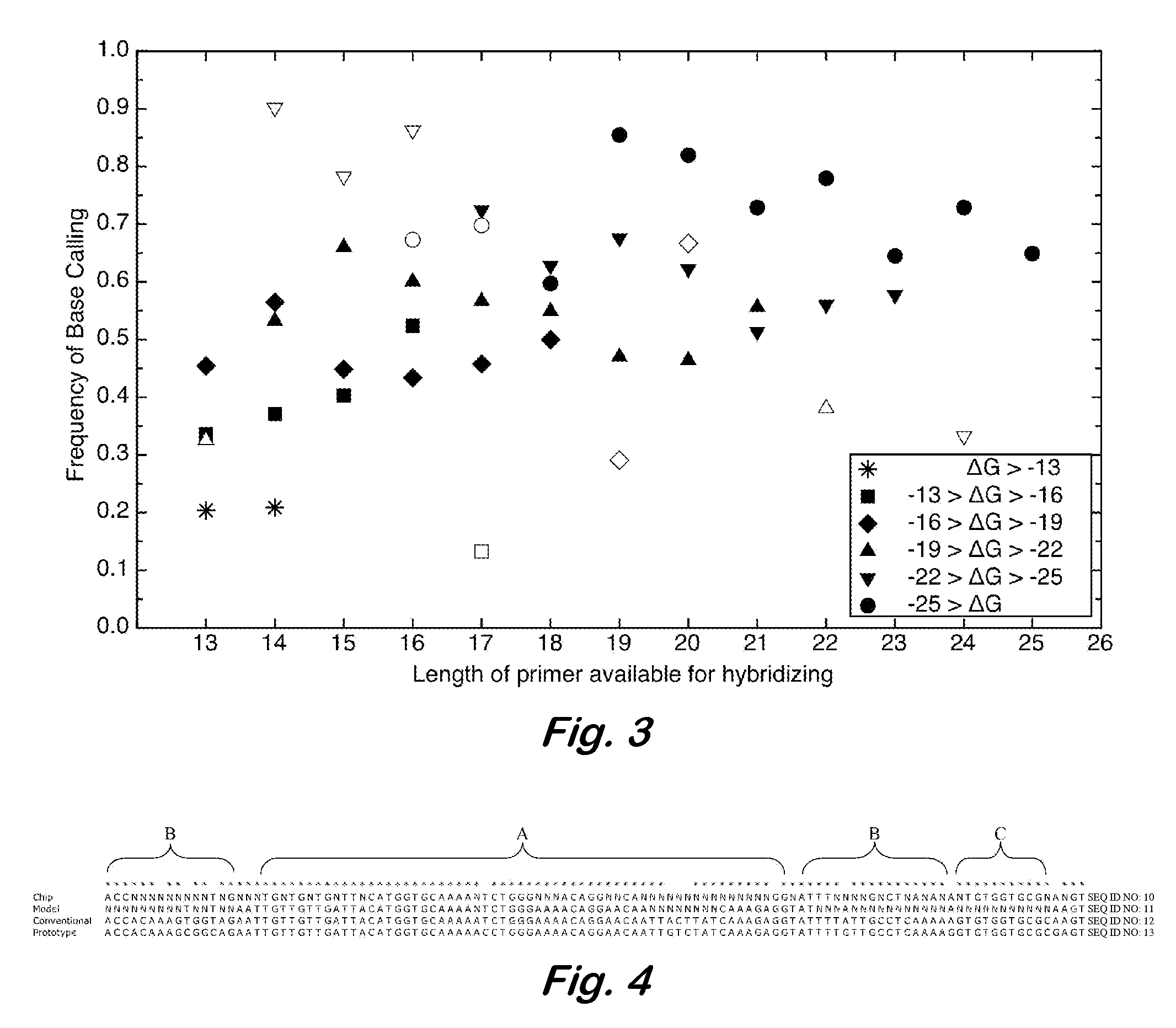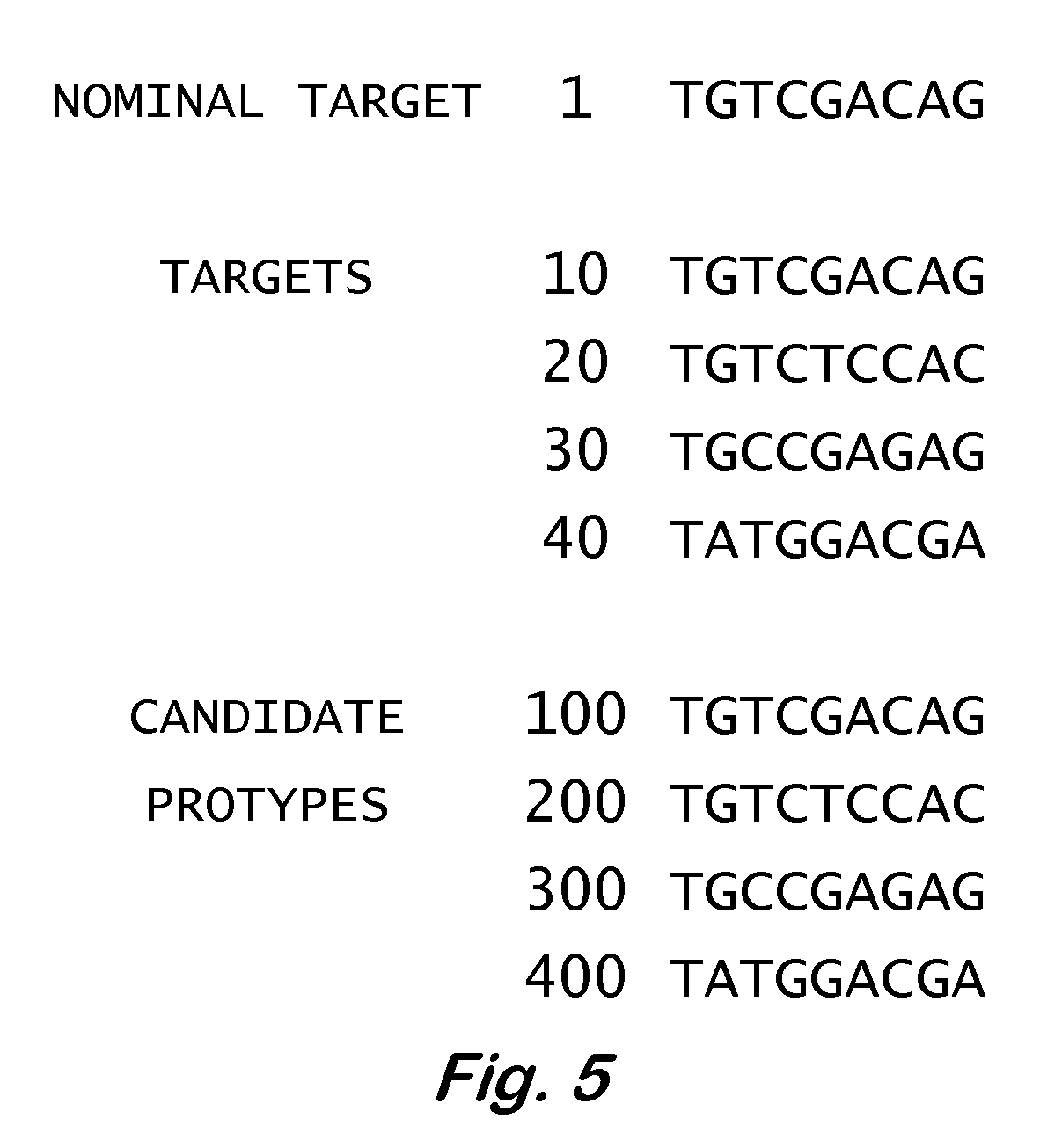Design and selection of genetic targets for sequence resolved organism detection and identification
a sequence-resolved organism and design technology, applied in the field of sequence-resolved organism detection and identification, can solve the problems of inability to accurately predict the effect of the selected probe, the level of modeling is incomplete, and the initial development, design and validation can become logarithmic complex,
- Summary
- Abstract
- Description
- Claims
- Application Information
AI Technical Summary
Benefits of technology
Problems solved by technology
Method used
Image
Examples
example 1
[0047]Hypothetical example with short sequences—The following illustrates the disclosed methods using artificial, short sequences not intended to correspond to any particular real species. It is desired to fabricate a resequencing microarray for detection of species A, B, C, D, and E. As used herein, “species” may refer to taxonomic species as well as different types or strains of a single species, and combinations thereof. It is known that nominal target 1 (FIG. 5) is found in the genome of at least one of these species. A search for similar sequences is performed using a database such as BLAST to produce a list of targets. A minimum percent similarity, for example 70%, may be used to filter the results. If too many targets or targets from too many species, such as genetically distant species, are reported, the percentage may be raised to reduce the size of the list. Also, the list may be manually reviewed for removal of specific, undesirable targets.
[0048]FIG. 5 shows a hypothetic...
example 2
[0055]Enteroviruses and Adenoviruses—The process was performed using enteroviruses and adenoviruses as the list of organisms. The final prototypes sequences are identified as SEQ ID NOS: 14-51. A resequencing microarray containing the probe sets generated from these prototypes was made has been designated RPMv.3.
[0056]Obviously, many modifications and variations of the present invention are possible in light of the above teachings. It is therefore to be understood that the claimed invention may be practiced otherwise than as specifically described. Any reference to claim elements in the singular, e.g., using the articles “a,”“an,”“the,” or “said” is not construed as limiting the element to the singular.
PUM
| Property | Measurement | Unit |
|---|---|---|
| length | aaaaa | aaaaa |
| fragment length | aaaaa | aaaaa |
| binding free energy | aaaaa | aaaaa |
Abstract
Description
Claims
Application Information
 Login to View More
Login to View More - R&D
- Intellectual Property
- Life Sciences
- Materials
- Tech Scout
- Unparalleled Data Quality
- Higher Quality Content
- 60% Fewer Hallucinations
Browse by: Latest US Patents, China's latest patents, Technical Efficacy Thesaurus, Application Domain, Technology Topic, Popular Technical Reports.
© 2025 PatSnap. All rights reserved.Legal|Privacy policy|Modern Slavery Act Transparency Statement|Sitemap|About US| Contact US: help@patsnap.com



